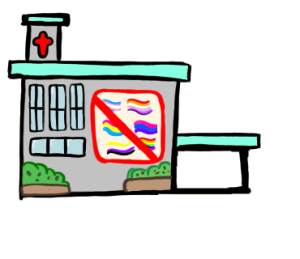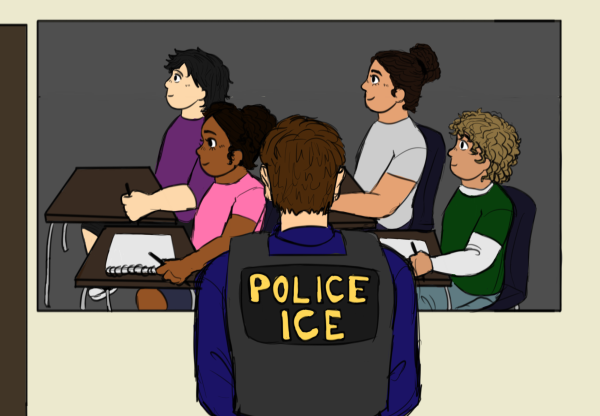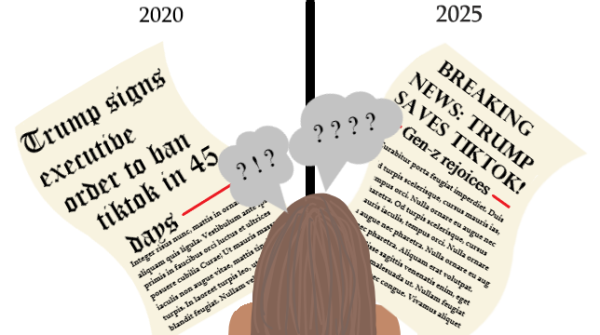Yes/No: Is the vandalism of famous art an effective form of climate protest?
Famous art has recently been vandalized by climate protesters

Yes.
“Nonviolent direct action seeks to create such a crisis and establish such creative tension that a community that has consistently refused to negotiate is forced to confront the issue. It seeks so to dramatize the issue that it can no longer be ignored,” American Baptist minister and activist Martin Luther King Jr.’s words still hold true today.
In recent weeks, Climate Change protesters have thrown paint and soup at famous artworks in London, Melbourne, Rome and Potsdam. Some have even glued themselves at the site after the act. However, the climate crisis is impending and can no longer be ignored so protesters are simply doing as King Jr. said: creating tension to draw attention to their issue.
The German National Committee of the International Council of Museums organized a statement, where art museums have claimed the activists “severely underestimate the fragility of these irreplaceable objects.” As a result of these demonstrations, 90 countries have jointly stated that they “have been deeply shaken” by their actions.
However, these climate change protests are misunderstood by art museums. The fragility and significance of the famous Van Gough and Monet paintings are exactly why they were targeted; to get equal attention to the climate crisis.
We have known about the imminent effects of climate change since the 70s—where Earth Day was first introduced. Teachers have read children stories of the Lorax for decades to warn them of human greed in the environment. Regardless, resources like fossil fuels continue to be the leading source of energy globally. In a logical fashion, climate change activists vandalized famous artwork in hopes that their cause becomes just as famous as Van Gogh and Monet.
Just Stop Oil, Stop Fossil Fuel Subsidies, and Last Generation are only a few of the environmental activist groups taking part in these protests. Yes, it is unfortunate that these famous paintings were vandalized, but it was for a good cause. We’ve seen the Koalas in Australia lose their homes due to wildfires and we’ve seen half of Europe burn up in flames earlier this year. The severity of the climate crisis is worse than a few renowned paintings getting splashed with food.
The reality is, these famous artworks are protected by glass, meaning the paintings suffered no irreversible damage, while our actions have irreversibly damaged the Earth. Instead, it is the fossil fuel industry we should be concerned about, not the protesters or the paintings.
Additionally, it cannot be said that these protests were unexpected. The actions of King or even further back in time, to the Boston Tea-Party, should have been enough warning to lawmakers that if an issue becomes ignored, civil disobedience follows.
In an interview for NPR, Phoebe Plummer explained that they joined Just Stop Oil after realizing their previous efforts were not enough to make meaningful change. Non-violent demonstrations such as these are a natural next step when activists realize that traditional forms of protest are ineffective.
When activists want attention for their cause, they will stop at nothing to gain it. It’s about time that the fossil fuel industry and governments are called out for their prolonged inactivity on mitigating their effects on climate change. Inaction would inevitably cause climate change activists to take their protests a step further. It is that uncomfortable tension which propels progress.
No.
As the climate crisis worsens, there has been a series of misguided methods of protest that target famous artwork and sculptures at museums and art galleries. In July, one group of protesters glued themselves to a painting by John Constable and another group to a painting by Sandro Botticelli. On Oct. 14, two Just Stop Oil climate change protesters dumped two cans of tomato soup over Vincent van Gogh’s famous painting “Sunflowers.”
As groups of spectators watch this event take place, one of the protesters states, “What is worth more, art or life?” It was clear that the activists intentions were to highlight the government’s inaction on the climate crisis. However, the absurdity of this protest lies not within its intention, but within the act of protest itself.
University of Maryland social scientist Dana Fisher, who studies activism, stated that “these tactics are specifically geared toward getting media attention.” In this respect, the protestors did succeed. They garnered attention on several media platforms. The worry is that it might not have been the intended attention they wished to receive.
Public outrage after the incident was instantaneous. In the eyes of the media, they did not see a climate protest, but instead they saw the defacement of famous and priceless pieces of art. At first glance this is not a simple protest. When viewers are only subjected to a headline and a photo this can be seen as an act of vandalism.
In a recent survey of public opinion conducted by the Annenberg Public Policy Center at the University of Pennsylvania, they wanted to investigate the impact these protests have had on public perceptions of climate change. The main question of the survey had been: ‘Do nonviolent disruptive actions decrease/increase your support for efforts to address climate change?’
Approximately 46% of the public reported that these protests decreased their support for efforts to address climate change, 27% were neutral and 13% reported increased support. Though the statistics show a varied amount, the majority found that these protests are discouraging the general public’s support of acting on climate change. Thus, having an opposite effect than desired.
University of Pennsylvania Earth and Environmental Science professor Michael Mann, explains how these actions, “create an affective rather than cerebral response, generating negative associations with climate activists. And that negative association translates to decreased support for their cause.” To sum up Mann’s statement, it is clear to those in support of climate change action that these protestors have no ill intent, rather that it is a rightful cause with the wrong execution.
Many strongly believe that these nonviolent forms of direct action are the most effective tools we have when it comes to combating societal issues. The Hill, a news organization, went as far as to compare these protests to those of Gandhi and Martin Luther King Jr. However, the distinct difference here is where these protests were held.
The Bus Boycott took place on a bus and was a fight against racial segregation on public transportation. Throwing soup on famous paintings is incomparable. There is no relation between climate change and these artworks. Even more importantly, these protests are targeting the wrong demographic.
The majority of art museums and galleries lean politically Democratic, specifically when it comes to the candidates they donate to. In 2016, “individuals associated with the American Museum of Natural History, the Metropolitan Museum of Art and the American Association of Museums all gave 99 percent or more of their contributions to Democrats.”
Approximately 90% of democrats believe in the need for more government efforts to reduce the effects of climate change. Because the art world leans democratic and the democratic party is heavily in favor of climate action, these art protests are like biting the hand that feeds you.
In other words, because the patrons of art museums and museum goers are in favor of action against climate change, these protests are being held in the wrong places and are witnessed by the wrong individuals. The execution of these protests is not effective when trying to draw attention to the climate change emergency. In contrast, it is decreasing support from groups that were previously in favor of environmental action.

I am a senior at Bonita Vista High and this is my second year on the Crusader. Last year I was an Arts and Culture Editor and this year I am the Features...

I am a senior at Bonita Vista High and this is my second year as a staff member of the Crusader. Last year, I had a blast being News Editor and I am excited...

I am a junior at Bonita Vista High and this is my first year as a staff member of the Crusader. This year, I am the News Copy Editor. I joined Newspaper...







